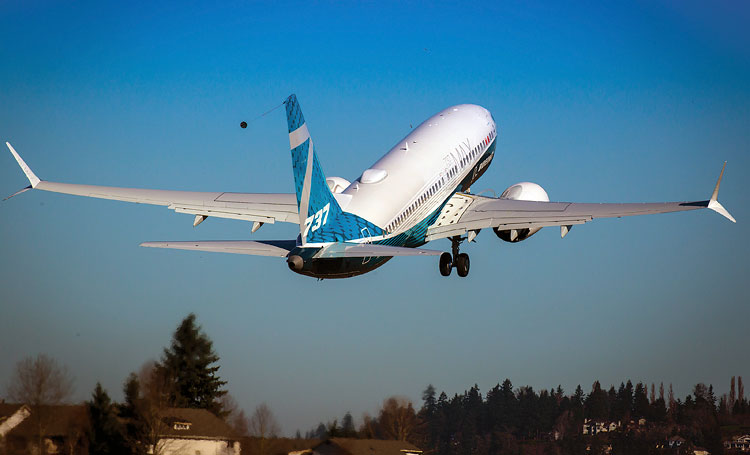INDIAN ARMED FORCES CHIEFS ON OUR RELENTLESS AND FOCUSED PUBLISHING EFFORTS

The insightful articles, inspiring narrations and analytical perspectives presented by the Editorial Team, establish an alluring connect with the reader. My compliments and best wishes to SP Guide Publications.

"Over the past 60 years, the growth of SP Guide Publications has mirrored the rising stature of Indian Navy. Its well-researched and informative magazines on Defence and Aerospace sector have served to shape an educated opinion of our military personnel, policy makers and the public alike. I wish SP's Publication team continued success, fair winds and following seas in all future endeavour!"

Since, its inception in 1964, SP Guide Publications has consistently demonstrated commitment to high-quality journalism in the aerospace and defence sectors, earning a well-deserved reputation as Asia's largest media house in this domain. I wish SP Guide Publications continued success in its pursuit of excellence.
Boeing resumes the production of 737 Max
After five months of inactivity, the aerospace manufacturer begins with the restart of production of controversial jetliners

Production of the 737 Max has been resumed by the aerospace manufacturer, Boeing, at the company‚s factory in Renton, Washington, after five months of inactivity, the company announced on May 27, 2020. The 737 program began building airplanes at a low rate as Boeing implements more than a dozen initiatives focused on what it calls enhancing workplace safety and product quality.Boeing also mentioned that the company has resumed the production at a “low rate” after halting production in January.
“We‚ve been on a continuous journey to evolve our production system and make it even stronger. These initiatives are the next step in creating the optimal build environment for the 737 Max,” said Walt Odisho, Vice President and General Manager of the 737 program.
In March 2019, the aircraft maker‚s best-selling plane was grounded after two fatal 737 Max crashes in five months (in October 2018 and March 2019). Boeing declined to say what the current production rate is. While Boeing has resumed production of the 737 Max, the planes are still grounded after the two crashes. The resumption is, however, a milestone for the jets and a sign of Boeing‚s optimism for their clearance to fly again.
Boeing halted production of the jetliners in January as a worldwide grounding of the planes dragged on longer than expected. Airlines have been prohibited from flying the jets since March 2019 after 346 people were killed in the two crashes.
Shortly after the second crash, the deliveries were halted and Boeing has been logging a surge in cancellations from customers this year as the coronavirus pandemic adds to Boeing‚s struggles. It continued producing the planes until it suspended output in January. Meanwhile, hundreds of them had piled up in storage facilities around the U.S.

In December the manufacturer announced it would suspend production of the aircraft, with the decision “driven by a number of factors, including the extension of certification into 2020, the uncertainty about the timing and conditions of return to service and global training approvals, and the importance of ensuring that we can prioritise the delivery of stored aircraft”.
The recertification process for the jets was also beset with delays as new problems cropped up and tasks took longer than expected. Boeing has not yet commented on whether the FAA (Federal Aviation Administration) was close to certifying the planes as safe to fly again. “Work on the project continues, as does our steadfast refusal to speculate on a timeframe for completing it,” the FAA‚s statement read.
“We‚ve been on a continuous journey to evolve our production system and make it even stronger. These initiatives are the next step in creating the optimal build environment for the 737 MAX,” said Walt Odisho, Vice President and General Manager of the 737 Programme.
Boeing stated in a press release that during the temporary suspension of production that began in January, mechanics, and engineers collaborated to refine and standardise work packages in each position of the factory. Boeing also said it instituted new kitting processes to aid worker efficiency.
“The steps we‚ve taken in the factory will help drive our goal of 100 per cent quality for our customers while supporting our ongoing commitment to workplace safety,” said 737 vice president of 737 manufacturing Scott Stocker.
Plans call for 737 MAX production to accelerate more slowly than originally planned following the narrow-body‚s year-and-half-long grounding. In a drastic departure from plans to raise the 737‚s peak rate of 57 a month to as many as 63, Boeing now sees 737 MAX rates gradually increasing to just 31 per month next year and modestly rising with any increased market demand thereafter.
This year, the 737 programme is expected to gradually ramp up production. During an April 29 earnings call, Boeing CEO David Calhoun said he hopes the company can resume 737 MAX deliveries during the third quarter of this year.
The resumption of production comes as Boeing continues to work on fixes to the airplane‚s flight control design following the twin crashes of the MAX. The company is specifically continuing the work on the software validation and required technical documentation to let it proceed to a certification flight.
Airlines were agitating for the new fuel-efficient planes last year to help cater to strong travel demand. But this year they have the opposite problem: too many planes and not enough passengers as the virus and measures to stop it from spreading keep would-be customers away from travelling.
Boeing is now scrambling to cut costs as it faces dismal demand for new planes. Last week, CEO Dave Calhoun said the company is laying off close to 7,000 employees this week, just the first group of reductions as it seeks to slash its staff of 1,60,000 by 10 per cent - most of those in the Seattle area—as the beleaguered air manufacturer deals with the fallout of the coronavirus pandemic that‚s at times seen air travel drop over 90 per cent compared to 2019.





